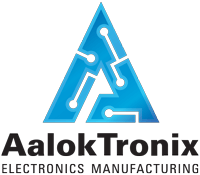Introduction:
Soldering is a crucial process in the production and maintenance of printed circuit boards (PCBs). However, various issues can arise during the soldering process, leading to substandard connections and even PCB failure. To ensure the reliability and functionality of your PCBs, it’s essential to be aware of the common soldering problems and how to avoid them. In this comprehensive guide, we’ll delve into the 13 most prevalent PCB soldering problems and provide practical solutions to mitigate these challenges effectively.
1. Cold Joints:
The Problem
Cold joints are a frequent occurrence in PCB soldering, often resulting from insufficient heat transfer during the soldering process. This leads to incomplete fusion between the solder and the component leads, compromising the electrical connection.
The Solution
To avoid cold joints, ensure adequate heat transfer by using an appropriate soldering iron temperature and allowing sufficient time for the solder to melt and flow evenly.
2. Solder Bridges:
The Problem
Solder bridges occur when excess solder creates an unintended connection between two adjacent pads or leads, causing short circuits.
The Solution
To prevent solder bridges, use flux generously, and employ a solder wick or a solder sucker to remove excess solder.
Additionally, maintaining an optimal soldering iron temperature and employing proper soldering techniques can help minimize the occurrence of solder bridges.
3. Tombstoning:
The Problem
Tombstoning happens when a surface mount component lifts and forms a vertical orientation during the reflow process, leading to poor soldering connections.
The Solution
To avoid tombstoning, ensure balanced pad designs, suitable component placement, and consistent temperature across the PCB during reflow soldering.
4. Insufficient Wetting:
The Problem
Insufficient wetting occurs when the solder fails to spread and adhere to the surfaces properly, resulting in weak solder joints.
The Solution
To improve wetting, use high-quality solder and flux, clean the surfaces thoroughly before soldering, and adjust the soldering temperature and duration as per the solder and surface specifications.
5. Excessive Solder:
The Problem
Excessive solder can lead to solder balls, bridges, or uneven solder joints, affecting the overall performance and reliability of the PCB.
The Solution
Employ proper soldering techniques, such as using the right amount of solder and maintaining a steady hand to achieve controlled solder deposition.
6. Pad Lifting:
The Problem
Pad lifting occurs when the copper pads detach from the PCB substrate due to excessive heat or improper handling during soldering.
The Solution
To prevent pad lifting, ensure appropriate soldering iron temperature, use suitable soldering tips, and handle the PCBs with care, especially during rework and repairs.
7. Component Damage:
The Problem
Excessive heat during soldering can damage sensitive electronic components, leading to their malfunction or complete failure.
The Solution
Utilize heat sinks or heat shields to protect heat-sensitive components, and adhere to the recommended temperature and time guidelines for soldering specific components.
8. Corrosion:
The Problem
Corrosion on solder joints can lead to poor electrical conductivity and signal integrity issues.
The Solution
Ensure the cleanliness of the PCB surface, use high-quality flux, and store the PCBs in appropriate environmental conditions to prevent moisture and other corrosive elements from affecting the solder joints.
9. Solder Balling:
The Problem
Solder balling refers to the formation of small balls of solder during the reflow process, which can cause short circuits and connectivity issues.
The Solution
Control the solder paste application, maintain a uniform reflow temperature profile, and ensure proper cleaning of the PCB surface to prevent solder balling.
10. Solder Cracks:
The Problem
Solder cracks can occur due to mechanical stress, thermal cycling, or improper soldering techniques, leading to intermittent connections or complete circuit failure.
The Solution
Use suitable solder materials with appropriate mechanical properties, and ensure the PCB design accounts for thermal expansion and contraction to minimize the risk of solder cracks.
11. Overheating:
The Problem
Overheating during the soldering process can damage both the components and the PCB, leading to irreversible failures.
The Solution
Use temperature-controlled soldering irons, follow the recommended heating profiles for specific components, and employ thermal management strategies to prevent overheating and thermal damage.
12. Flux Residue:
The Problem
Flux residue, if not properly cleaned, can lead to electrical shorts, corrosion, and overall PCB reliability issues.
The Solution
Use high-quality, low-residue flux, and implement thorough cleaning processes, such as using appropriate solvents and cleaning tools, to remove any flux residues effectively.
13. Inadequate Inspection:
The Problem
Inadequate inspection processes can result in the oversight of soldering defects, leading to poor-quality PCBs and potential failures.
The Solution
Implement comprehensive visual inspection protocols, utilize automated inspection tools, and conduct regular quality checks to ensure the detection and rectification of any soldering issues.
Conclusion:
Effectively addressing common PCB soldering problems is essential for ensuring the reliability, functionality, and longevity of printed circuit boards. By understanding these common issues and implementing the recommended solutions, you can significantly improve the soldering quality, enhance the overall performance of your PCBs, and mitigate the risks of costly rework and repairs. Prioritizing best practices and quality control measures during the soldering process is instrumental in maintaining high standards of PCB manufacturing and assembly, contributing to the success of electronic projects and products in various industries.
